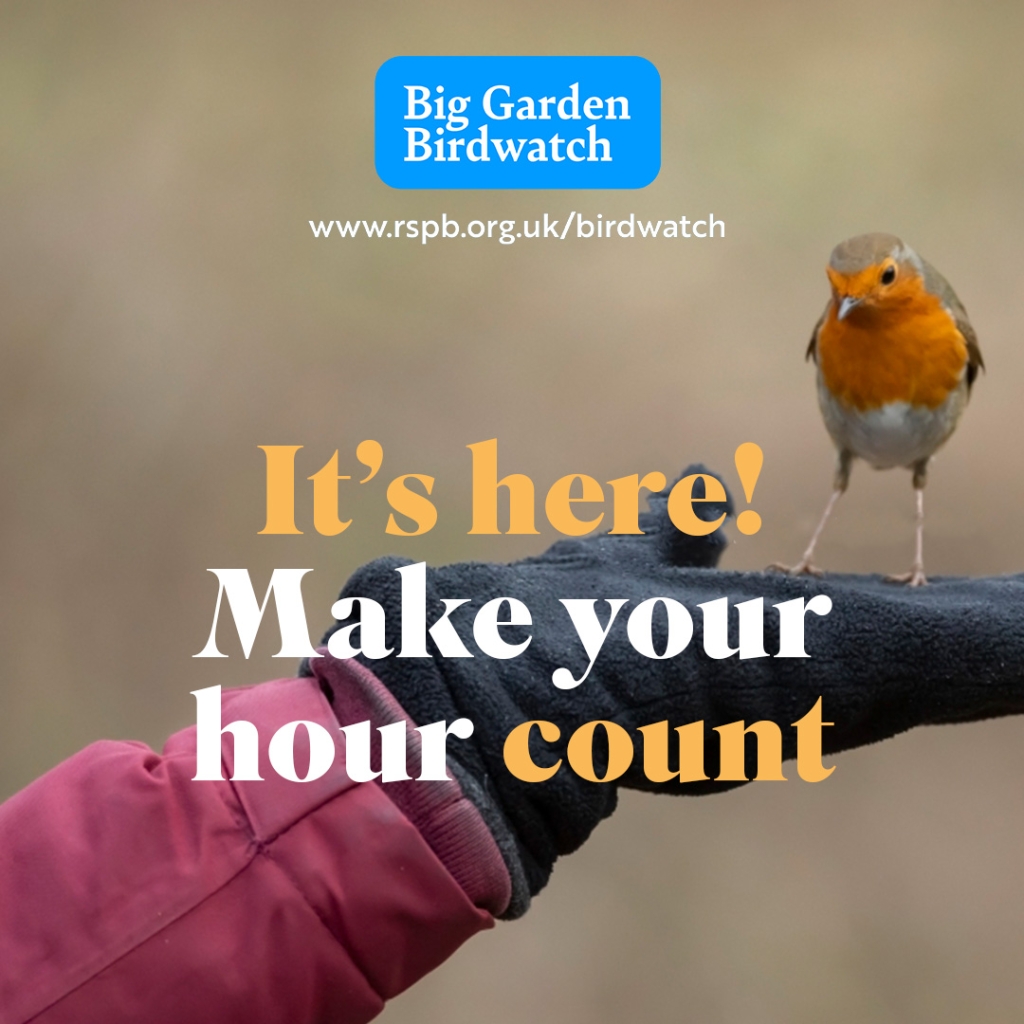Garden birds in Nottinghamshire are counting on you!
The world’s largest garden wildlife survey returns this weekend, with hundreds of thousands of people expected to watch and count the UK’s garden birds for the RSPB’s Big Garden Birdwatch.
Over half a million people took part in 2023, counting more than nine million birds. In Nottinghamshire, almost 9,000 people took part, with the House Sparrow taking the top spot as the most commonly seen bird, followed by Blackbird and Woodpigeon.

People in Nottinghamshire are asked to spend an hour watching and counting the birds in their garden, balcony or local park, then send their results to the RSPB.
This year’s event marks 45 years since the first Big Garden Birdwatch. Starting in 1979, it has since become a much-loved annual citizen science event, that gives the RSPB a valuable snapshot of how garden birds are doing in the UK.
Over that time, 185 million birds have been counted and nearly 11.5 million hours spent watching and counting garden birds.
Beccy Speight, the RSPB’s Chief Executive, said: “By taking part in the Birdwatch you are joining hundreds of thousands of people from across the UK, united in a love of nature, to play an important role in helping us understand how UK birds are doing.
“Big Garden Birdwatch demonstrates the power that people have when they come together for nature. Join us for Big Garden Birdwatch 2024 and together let’s take action to help birds and other wildlife thrive for generations to come.”
Across the UK, House Sparrows celebrated their 20th year as the number one bird spotted in gardens in 2023. While nearly 1.5 million were spotted across the January weekend, these birds have sadly suffered severe declines. In fact, the number of House Sparrows spotted in gardens has dropped by nearly 60% since the Big Garden Birdwatch first began in 1979.
Over its four decades, Big Garden Birdwatch has highlighted the winners and losers in the garden bird world. The Long-tailed Tit, a much-loved species, rose five positions in the rankings last year, with numbers 39% higher than in 2022. However, Long-tailed Tits are susceptible to harsh weather conditions, with the numbers recorded fluctuating since the Big Garden Birdwatch began.
Meanwhile, Greenfinches and Chaffinches have been badly affected by a disease known as Trichomonosis. As a result, the UK Chaffinch population has declined by 37% over the last decade, while Greenfinches have declined by 62% over the same time frame.
The Birdwatch was first to alert the RSPB to the decline in Song Thrush numbers, which are down 80% compared to the first Big Garden Birdwatch in 1979. This species was a firm fixture in the top 10 in 1979 but by 2009, its numbers were less than half those recorded 30 years beforehand. The Song Thrush scraped in at number 20 in the rankings this year, seen in just 9% of gardens.
Beccy added: “The birds we see in our gardens, from our balconies, and in our parks, are a lively, colourful and endlessly fascinating part of all our lives. By taking part in the Birdwatch, you and hundreds of thousands like you, play an important role in helping us understand how UK birds are doing.
“With birds and other wildlife now facing so many challenges due to the nature and climate emergency, every count matters.”
To take part in the Big Garden Birdwatch, sign up at www.rspb.org.uk/birdwatch Then simply watch the birds on your balcony, in your garden or in your local green space for one hour at some point on 26, 27 or 28 January. Only count the birds that land, not those flying over. Log the highest number of each bird species you see at any one time – not the total you see in the hour, and then send your results in to the RSPB.
Find out more at www.rspb.org.uk/birdwatch